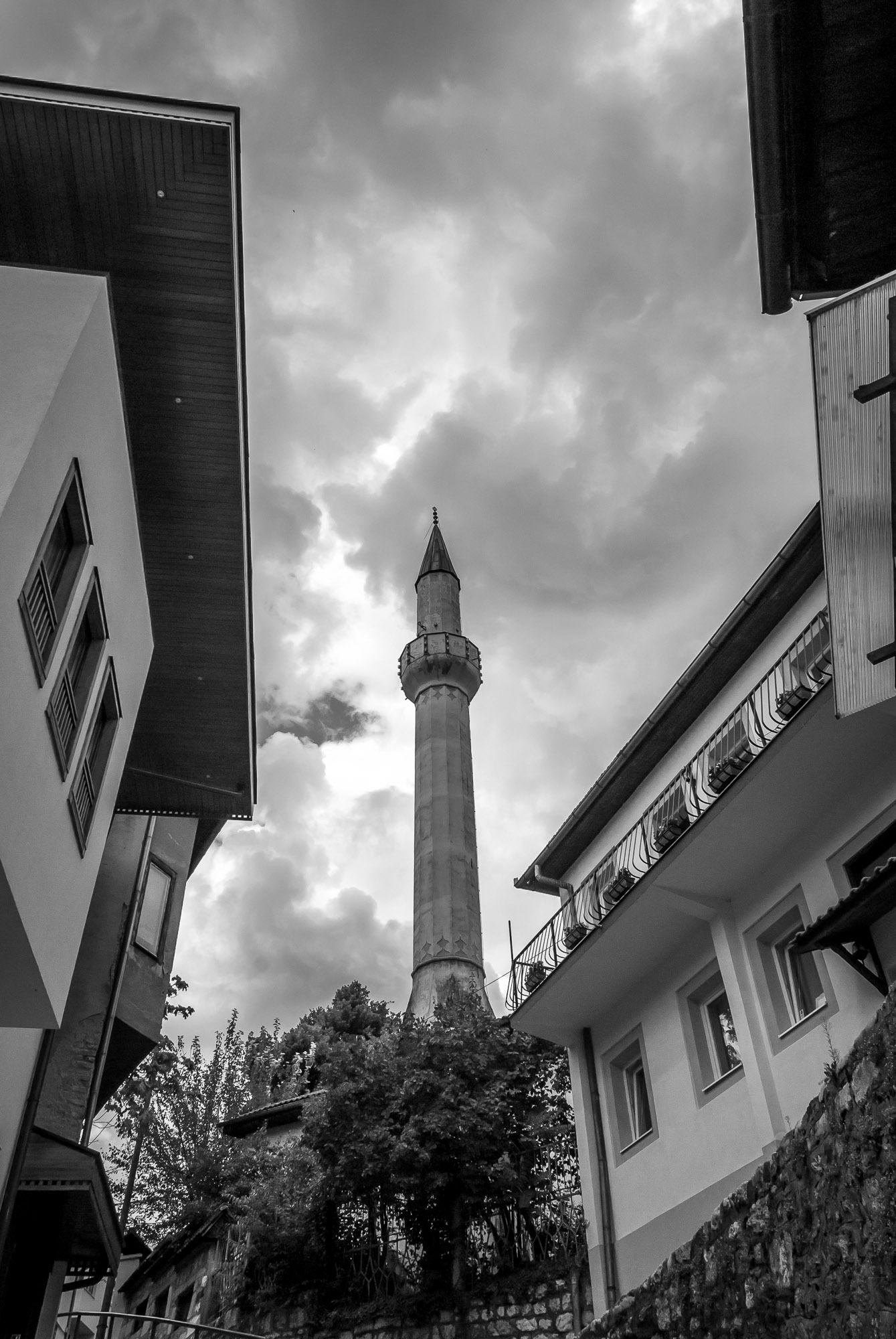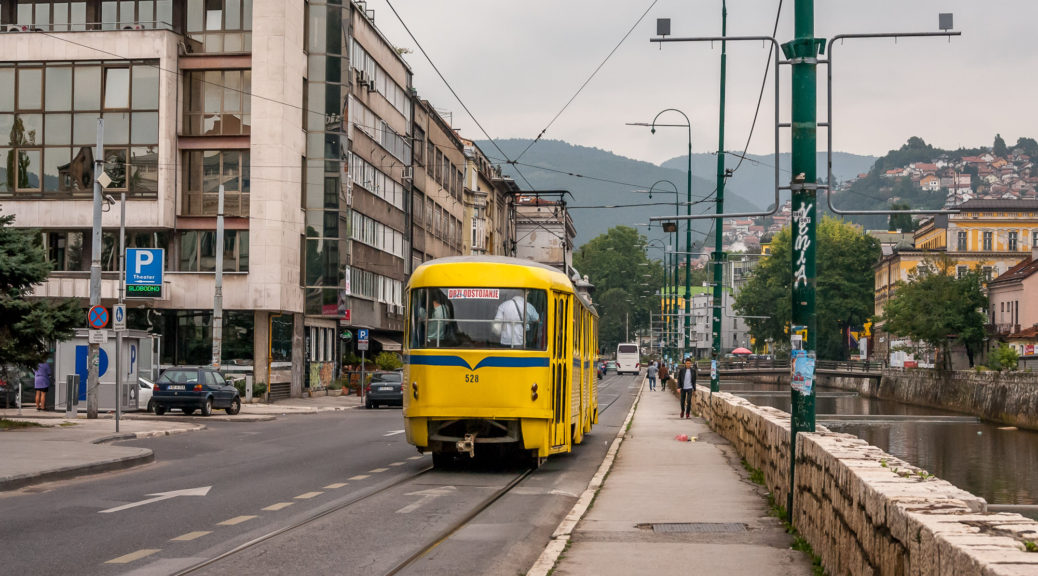
Sarajevo
After Ljubljana we said goodbye to our friends Sam and Spencer. We were on our own again and free to go anywhere we wanted. Sarajevo wasn’t really on my radar but Dan had recently finished a book about the lead up to World War I. He was eager to see the site of Franz Ferdinand’s assassination.
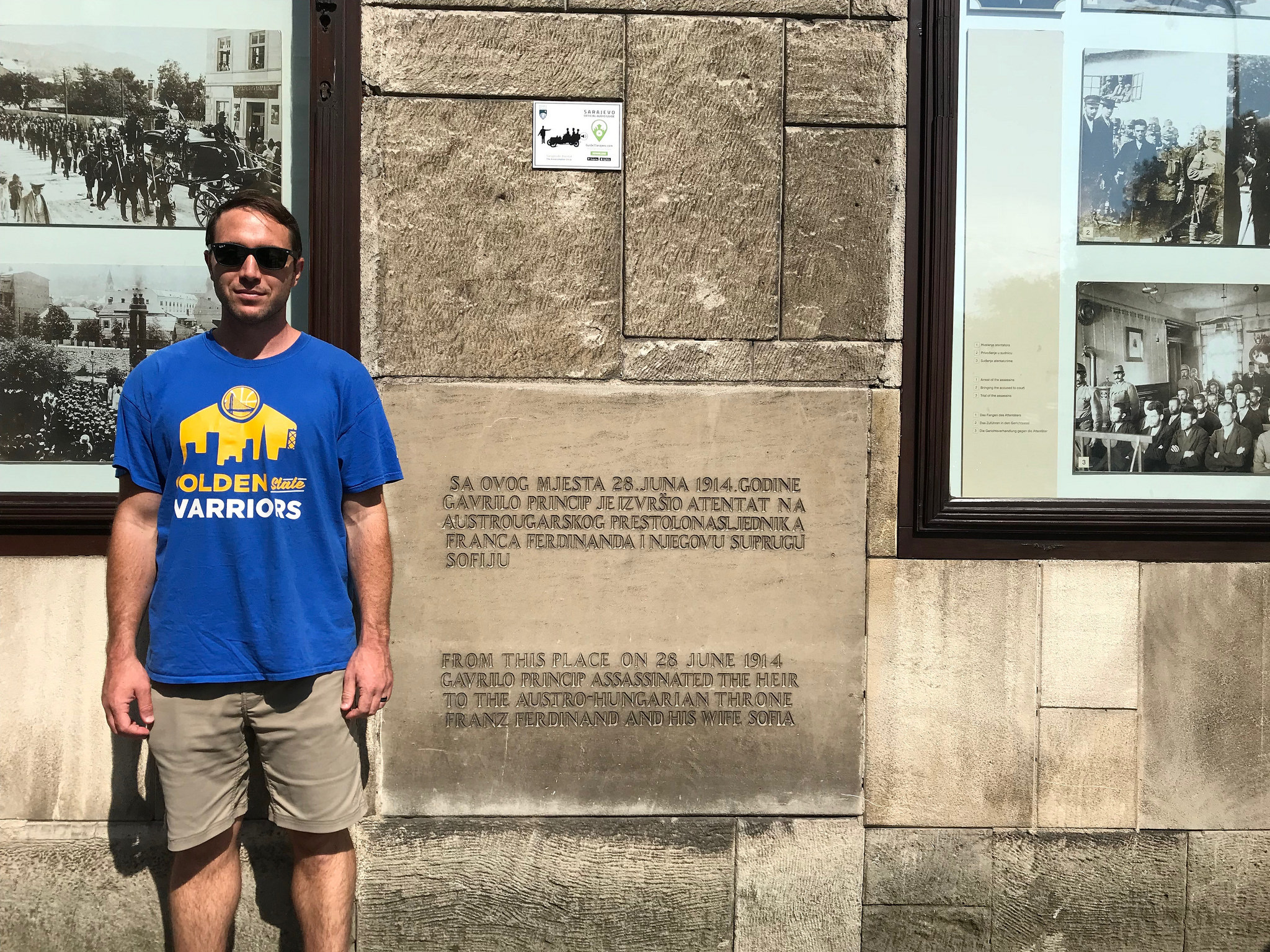
When we started researching how to get to Bosnia we got our first hint that tensions in the Balkans haven’t totally cooled. Despite having a fairly modern rail system, Bosnia is not connected by train with it’s neighbors to the north due to a dispute with Croatia. We decided to make things easy for ourselves and booked a flight from Ljubljana to Sarajevo.
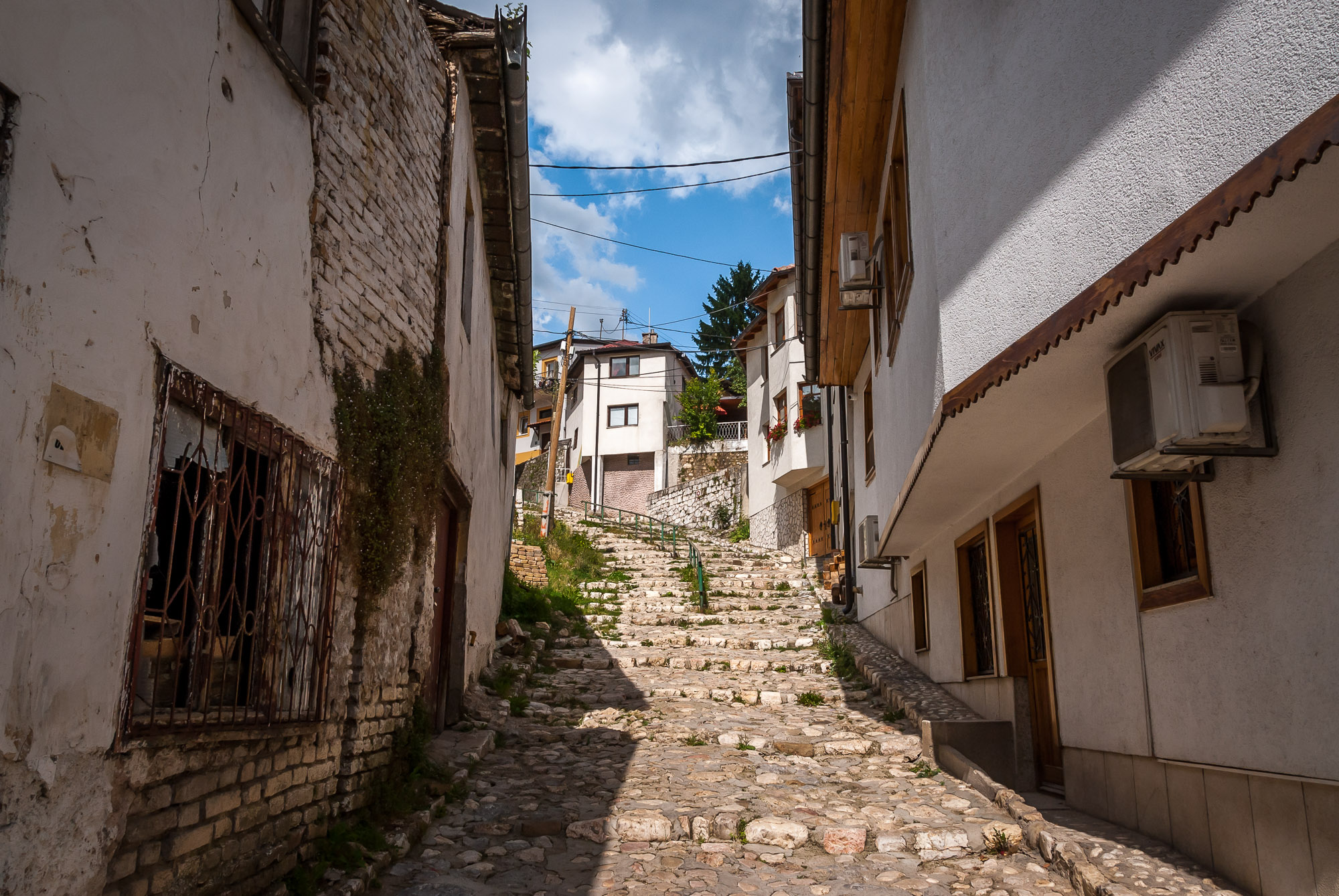
As I stared out the window on our taxi ride into town I became totally enthralled with this little city. Sarajevo is nestled in a valley surrounded by forested mountains. There is something distinct about the light here and with little red roofed buildings nestled in lush green hills it feels almost tropical. Add to that the loose chickens, dirt roads and seemingly slapped together farmhouses of the rural area surrounding the city and the whole place reminded me more of Asia than of the rest of Europe.
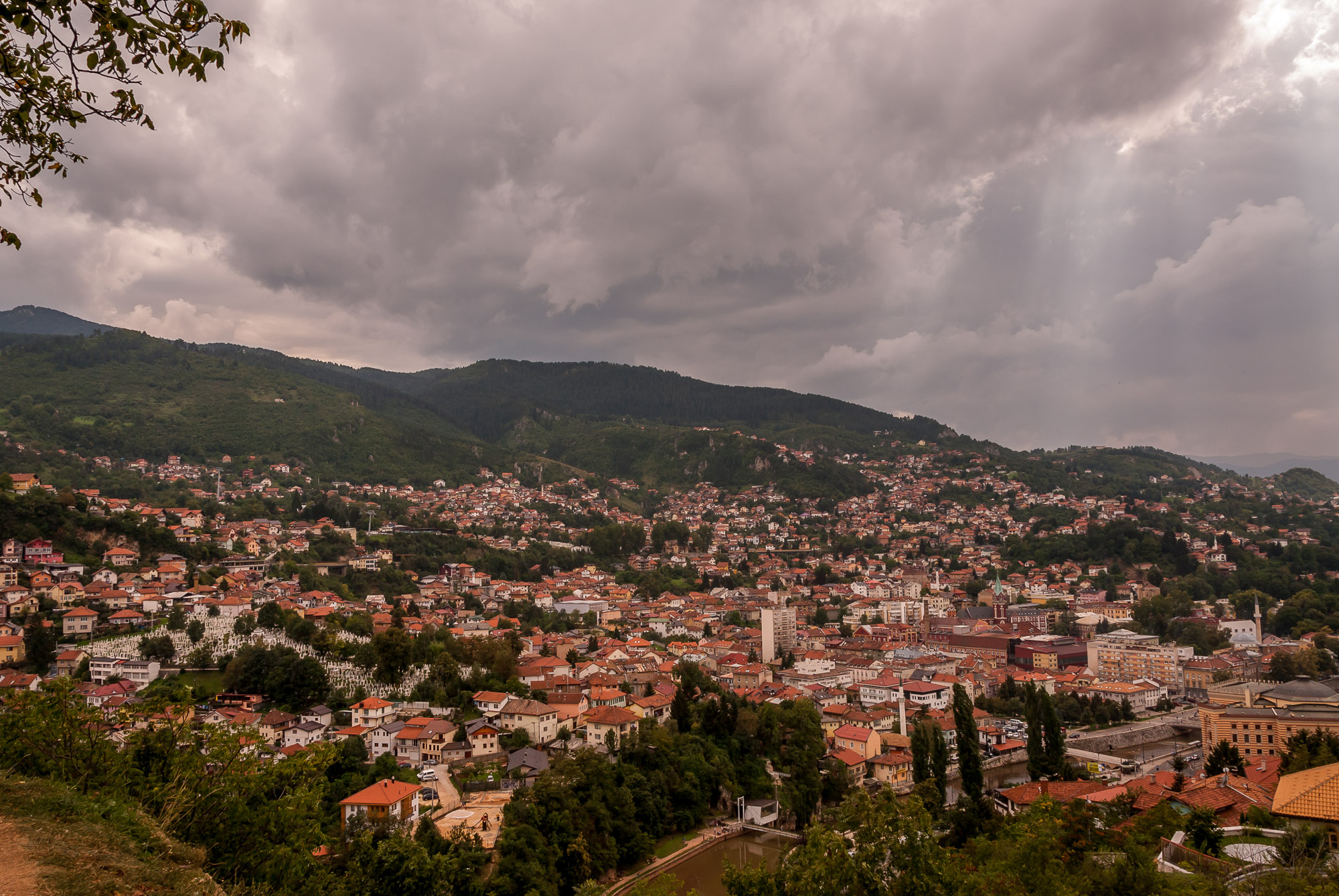
But as we entered the city center Saravjevo began to look more and more like the other grand European capitals we’d seen. (We would learn later that this more typically ‘European’ architecture was a remnant from Bosnia’s brief period under the rule of the Hapsburg Empire.)
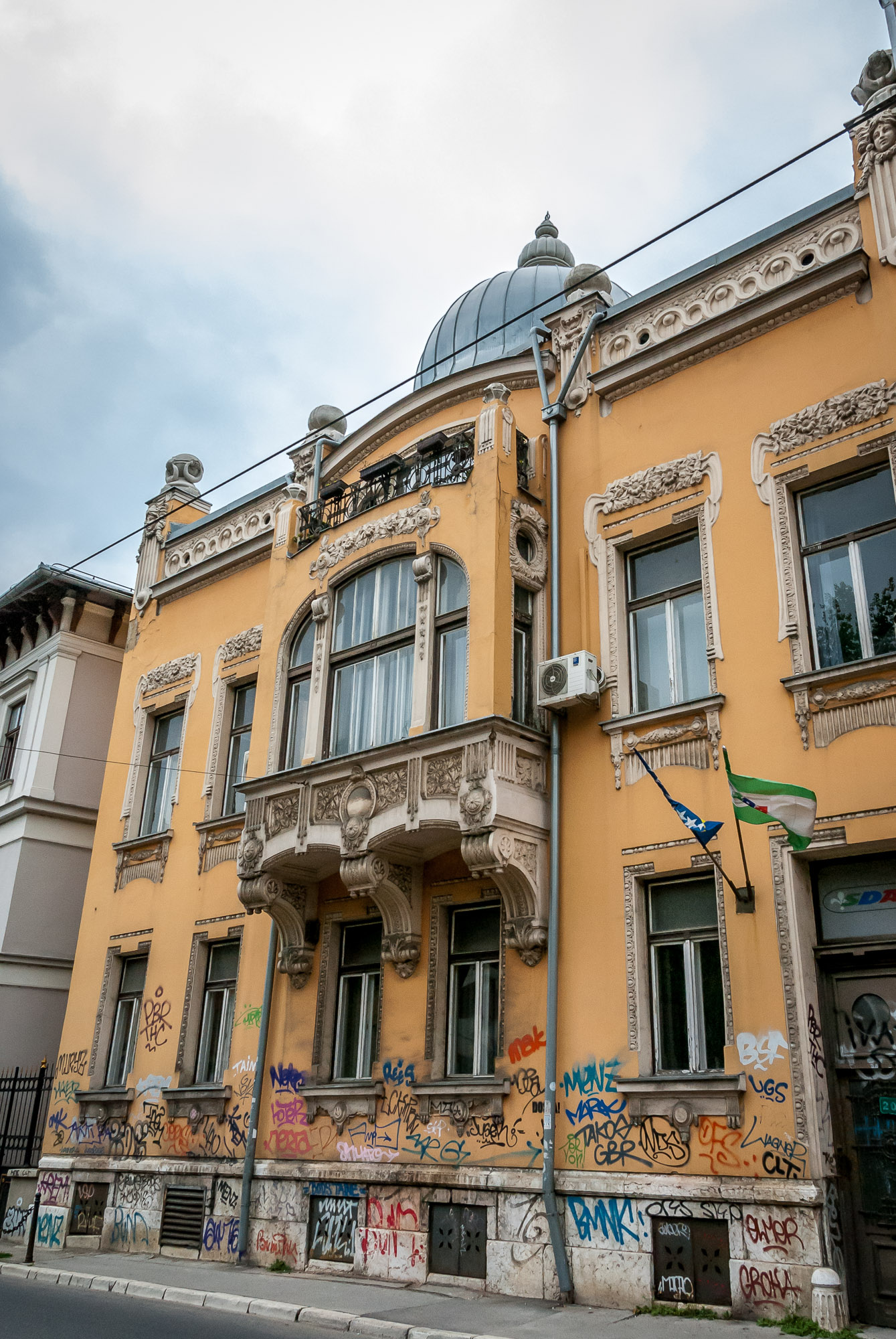
We began our time in Sarajevo with a free walking tour to get acquainted with the city. Our guide went over the major eras of Bosnia’s history. It was on this tour that we first heard the city described as ‘where east meets west’. The reasons for this nickname are obvious. Right down the street from those Hapsburg-era buildings are remnants of Bosnia’s much longer ruler: the Ottomans.
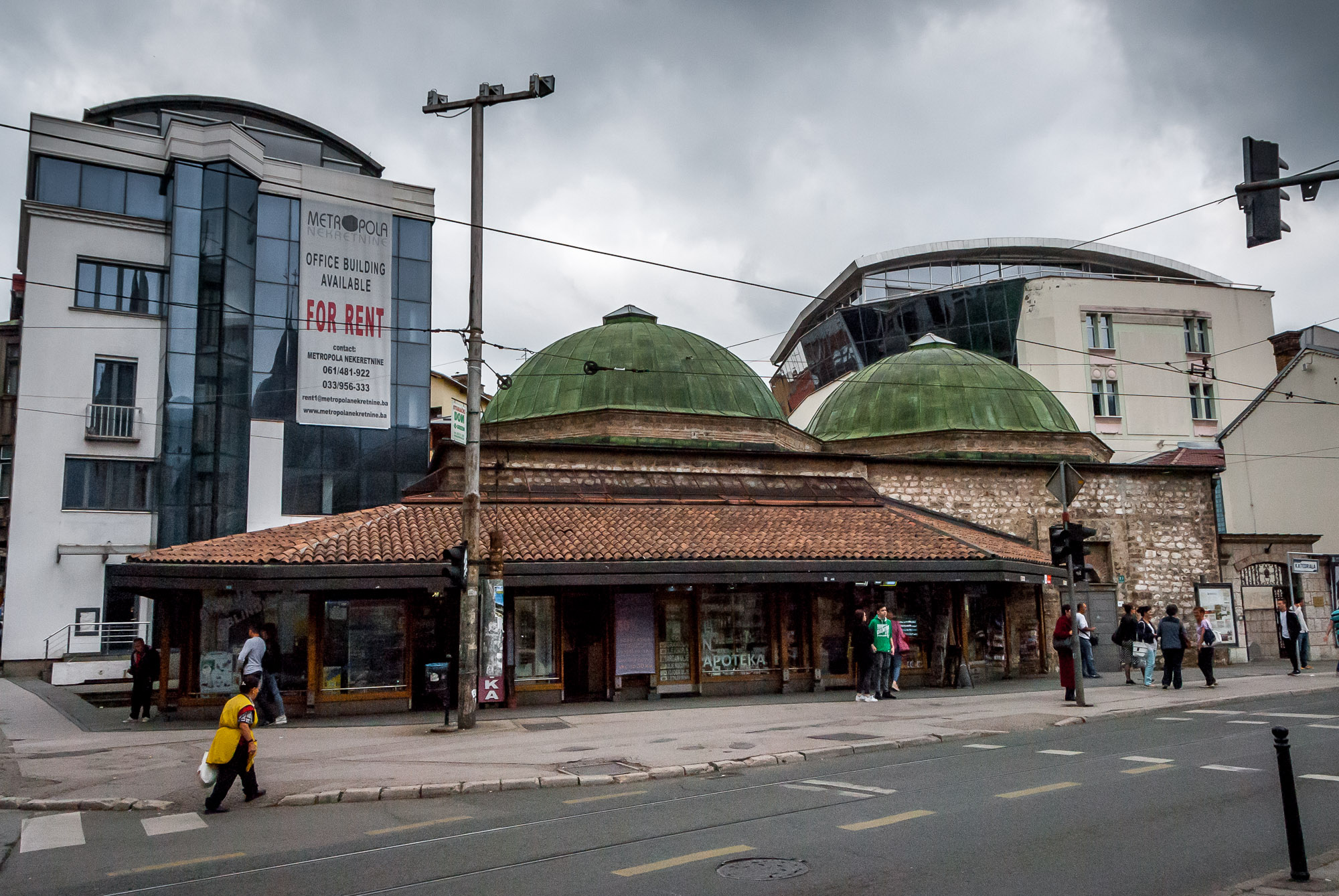
The lasting Turkish influence on the city is felt most strongly in the Baščaršija, or old market area. The buildings here are low and made of stone and many are capped with shallow domes. This is Sarajevo’s historic and cultural center and merchants still line the streets, selling all sorts of handicraft souvenirs.
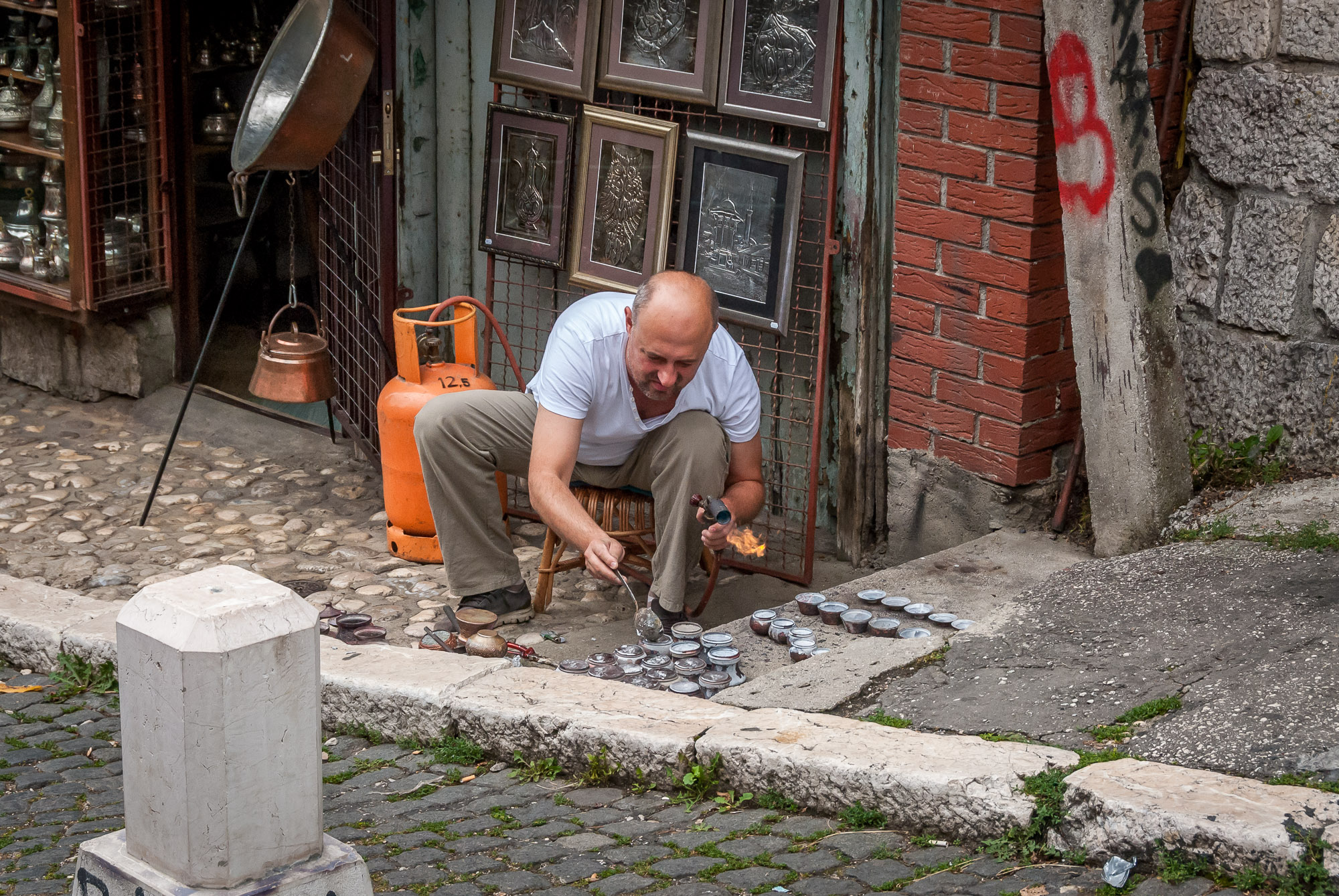
The periods of Austro-Hungarian and Turkish rule were essential to shaping modern Sarajevo but it is impossible to really understand Sarajevo or Bosnia without delving into the city’s more recent history. I knew very little about the collapse of Yugoslavia and the most recent Balkan Wars before arriving in this part of the world. I was too young to understand the Bosnian conflict while it was happening but it was too recent to be covered in the history books while I was in school.
On our drive into town from the airport we passed bombed out buildings that were never repaired and many more that were pock-marked with bullet holes. That’s when it hit home: this was the country we were visiting with the most recent major armed conflict.
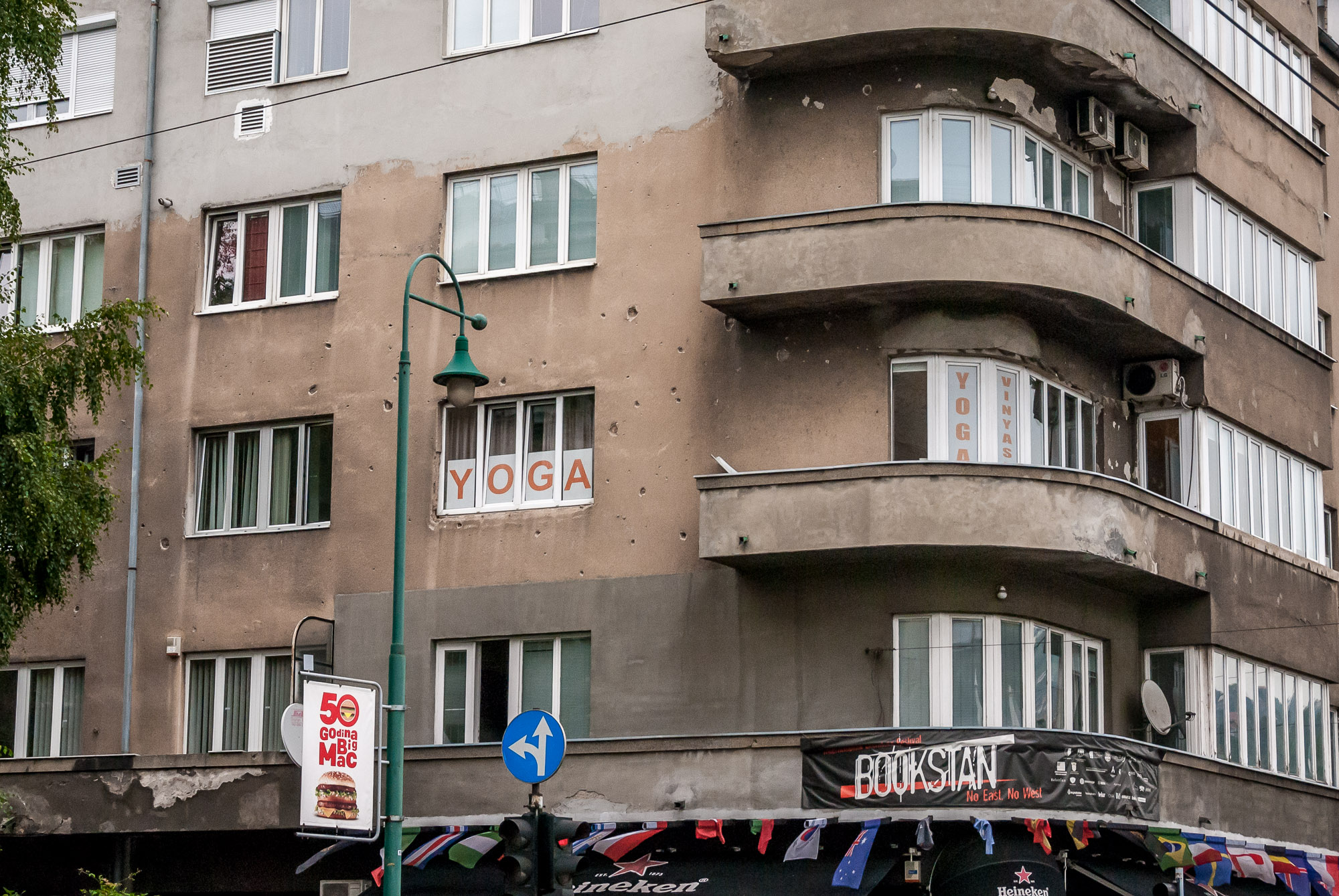
While the scars of recent wars were still visible in places like Vietnam and Laos, it was different to hear someone our age (the guide on our walking tour) talk about spending years of his childhood in a basement underground. The siege of Sarajevo ended in 1996 but twenty two years later the city is far from completely recovered.
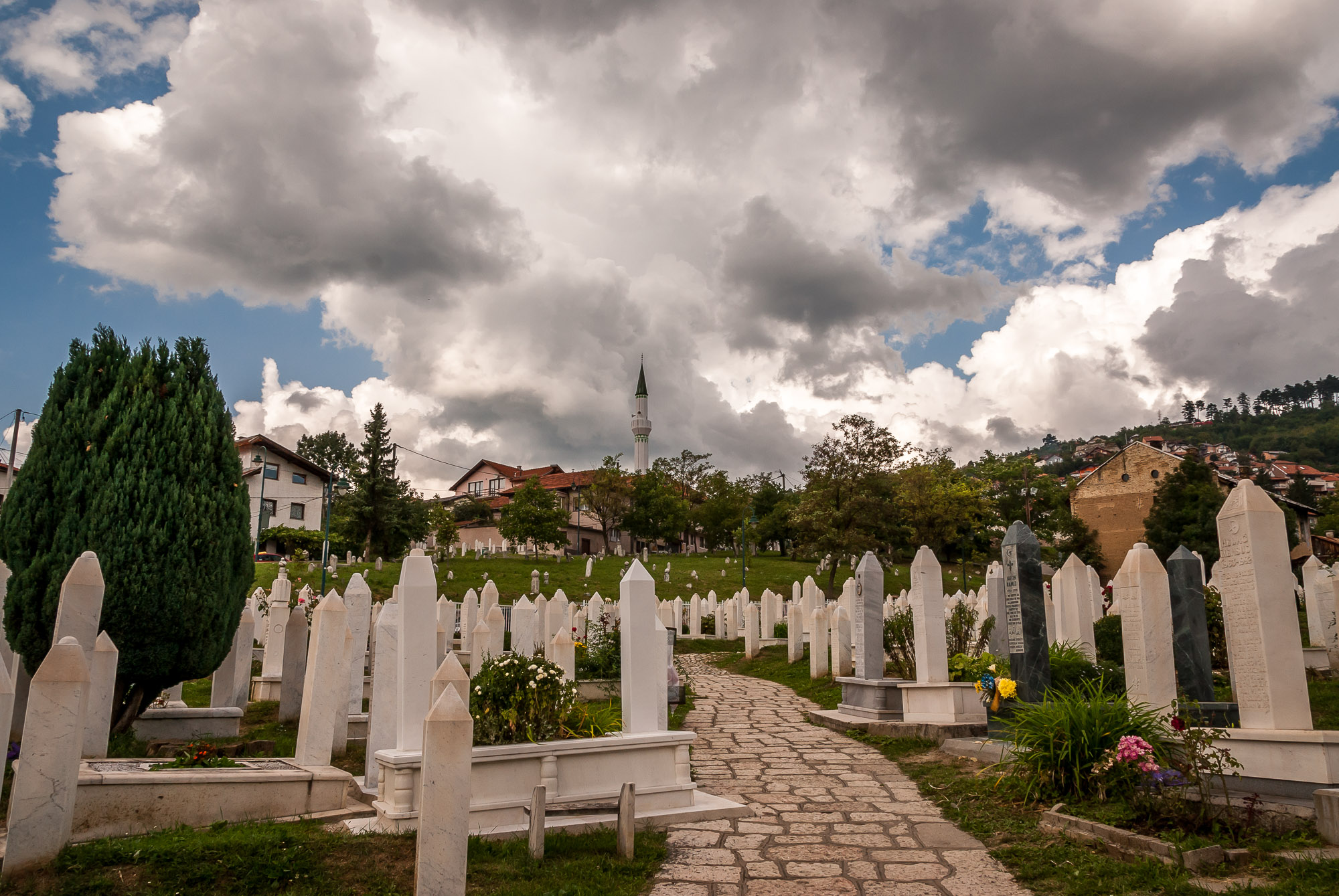
Signs of the war are everywhere in the form of bullet-riddled facades and divots in the pavement from exploding mortar shells. But the scars go deeper than the physical damage to the city. The more we talked to the locals the more we got a sense of a nation still divided along religious lines and one whose economy has been severely handicapped by the conflict even after twenty years of tenuous peace.
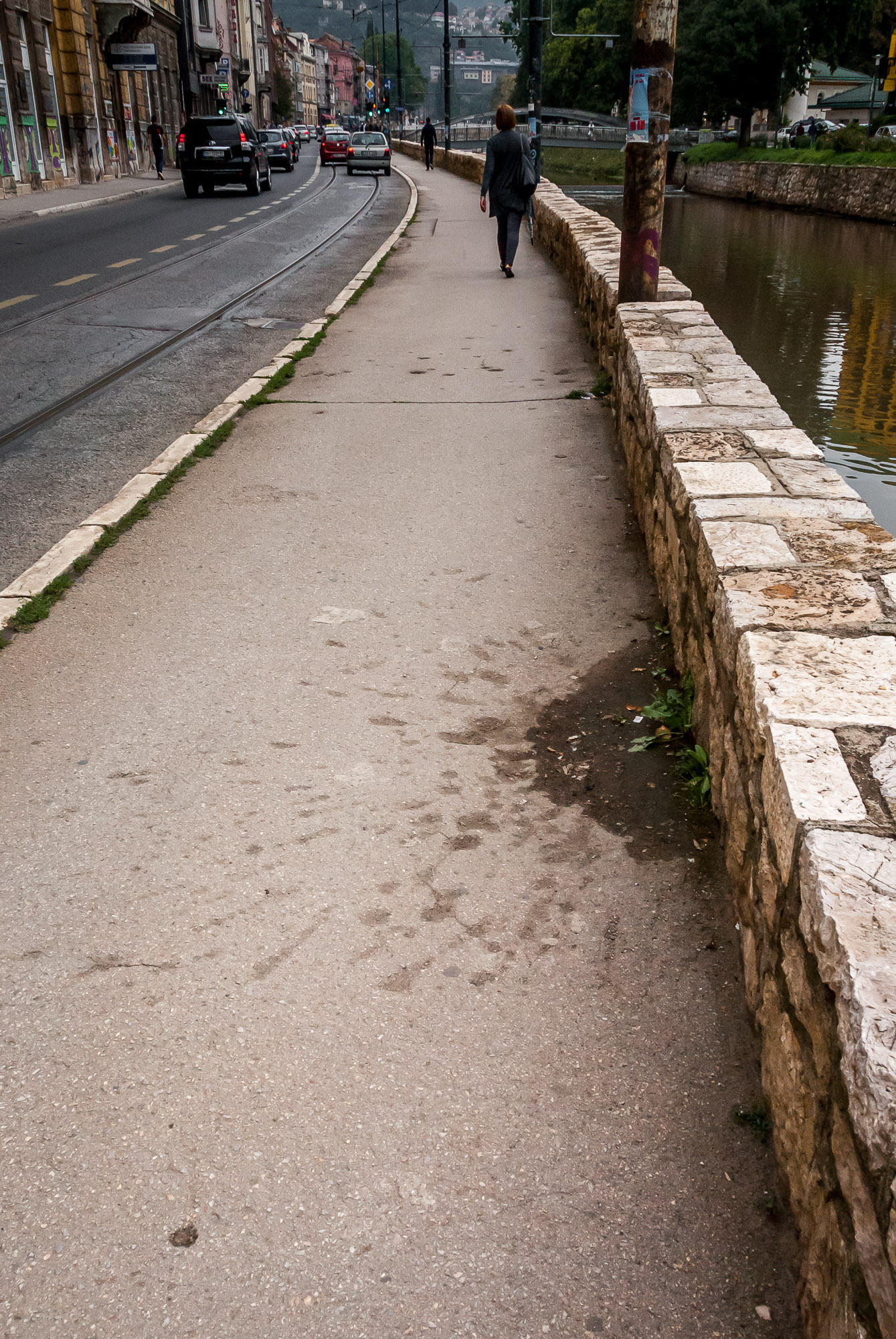
But Bosnia is not a country wallowing in its past. Sarajevo is a vibrant city with great bars and restaurants. Everyone we met was warm and welcoming and eager to share their culture with us. We spent our days wandering around the city and hiking up into the surrounding hills. We got to try some delicious Bosnian food and spent our afternoons in cafes sipping Bosnian coffee and munching on syrupy baklava.
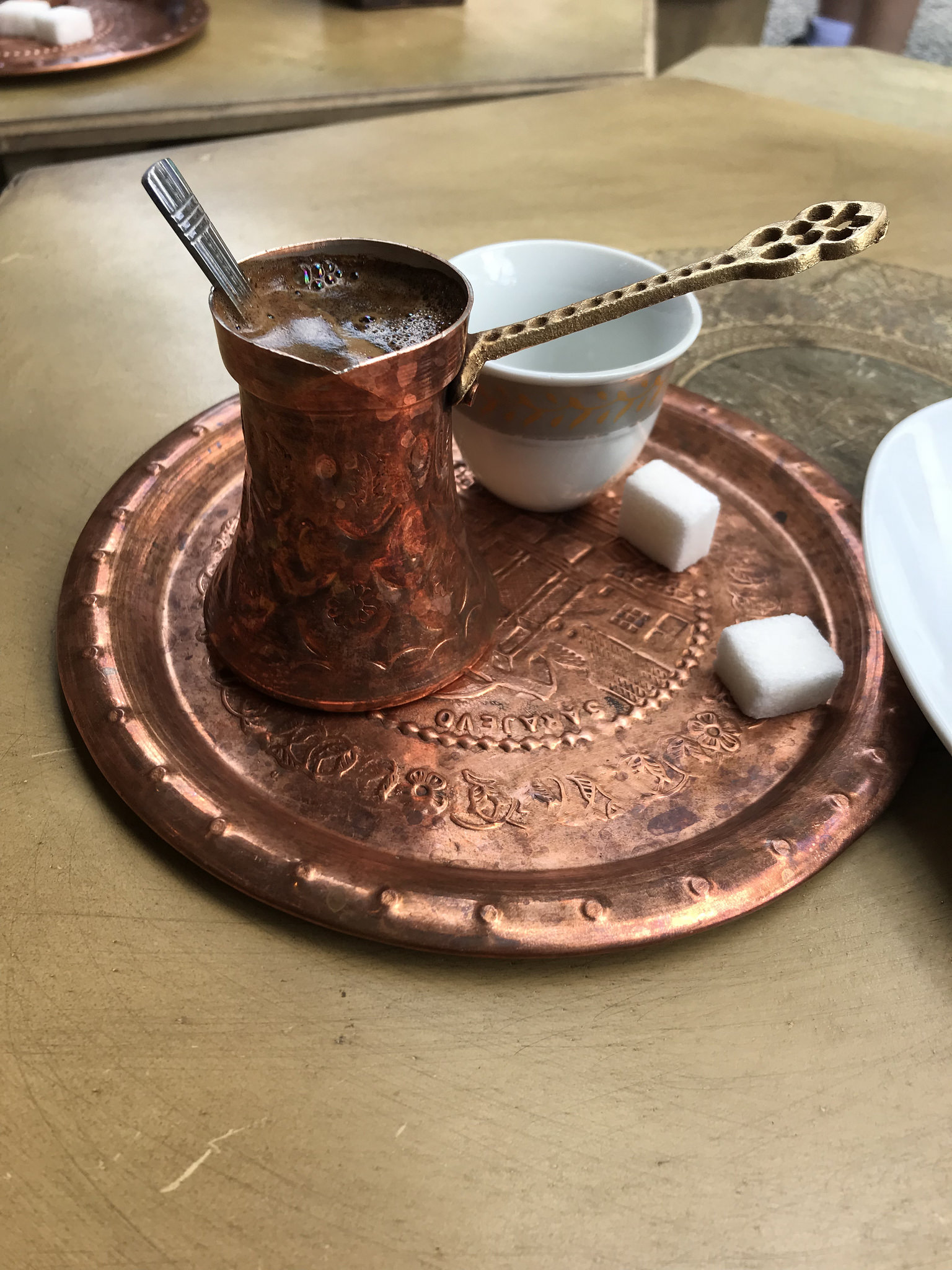
Sarajevo is not a city jam packed with tourist attractions and I would recommend that visitors take it slow and spend their time soaking in the city’s unique atmosphere. However, one must-see sight (in my opinion) is the abandoned bobsled track in the mountains above town.
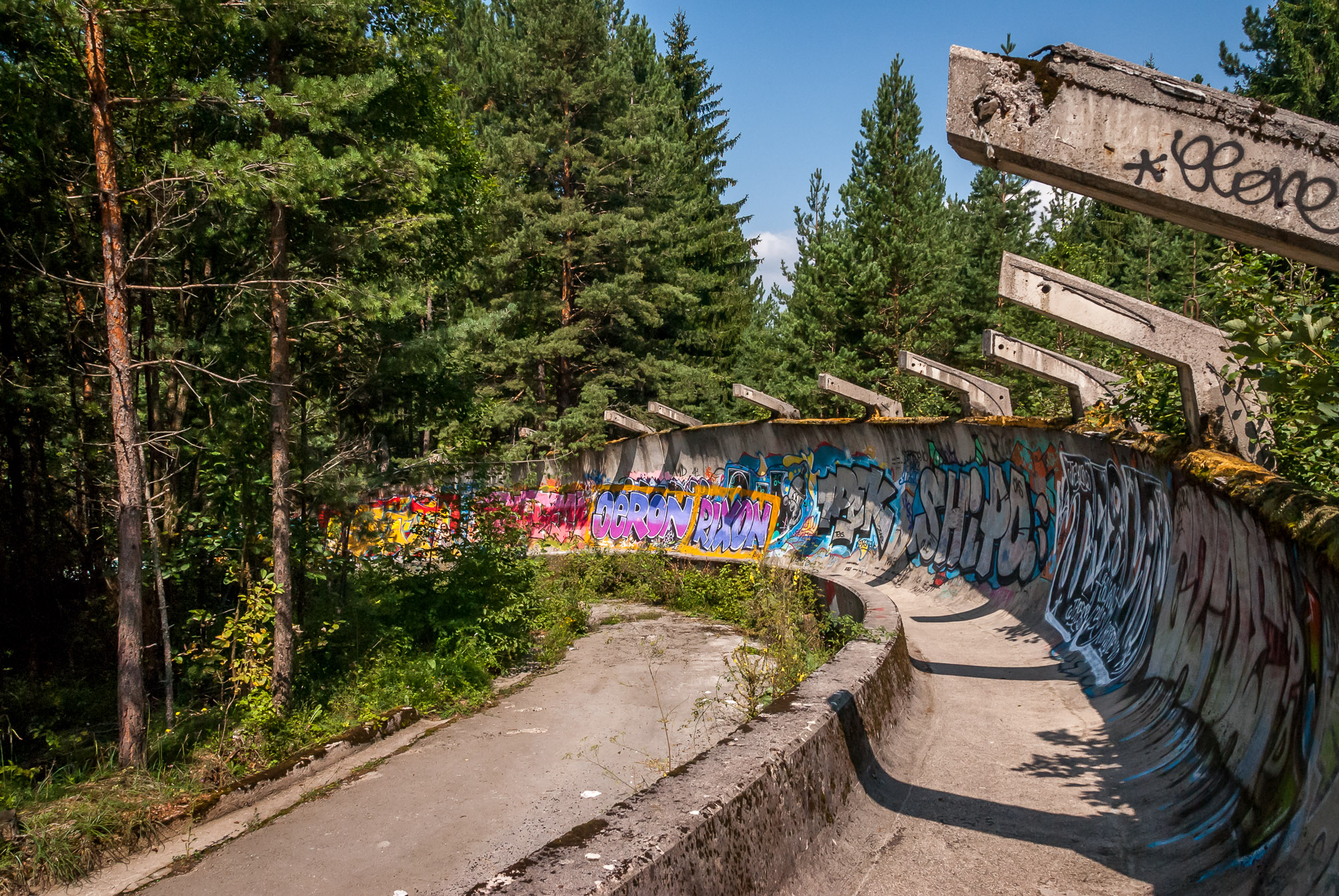
The track was originally built for the 1984 winter Olympics, hosted in Sarajevo. During the war it was used as an artillery position by the Bosnian Serb forces laying siege to the city below. The track was badly damaged and abandoned after the war.
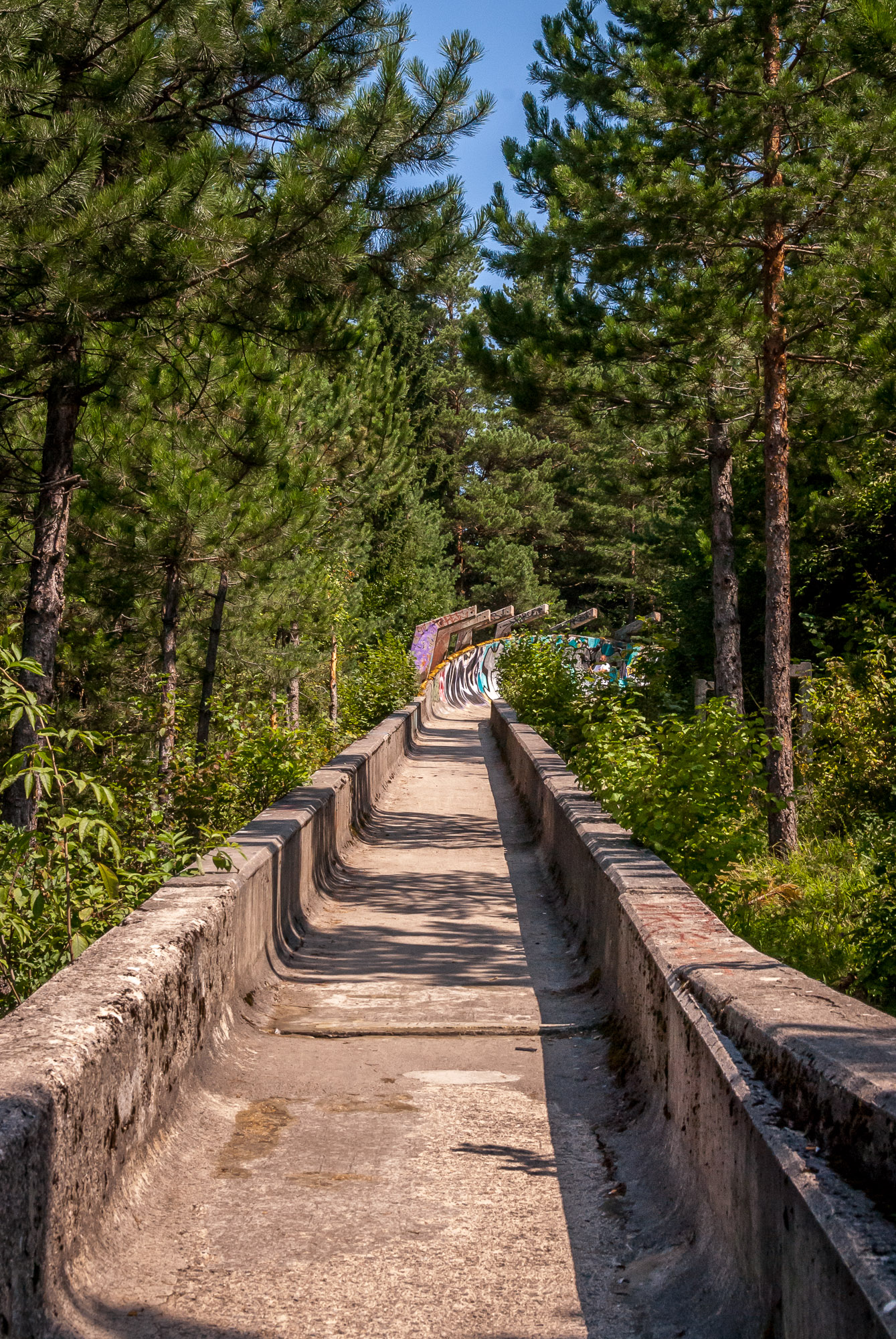
To reach the track we took the newly re-opened cable car up the mountain. The top is a lovely nature park with hiking trails and great views of the city far below.
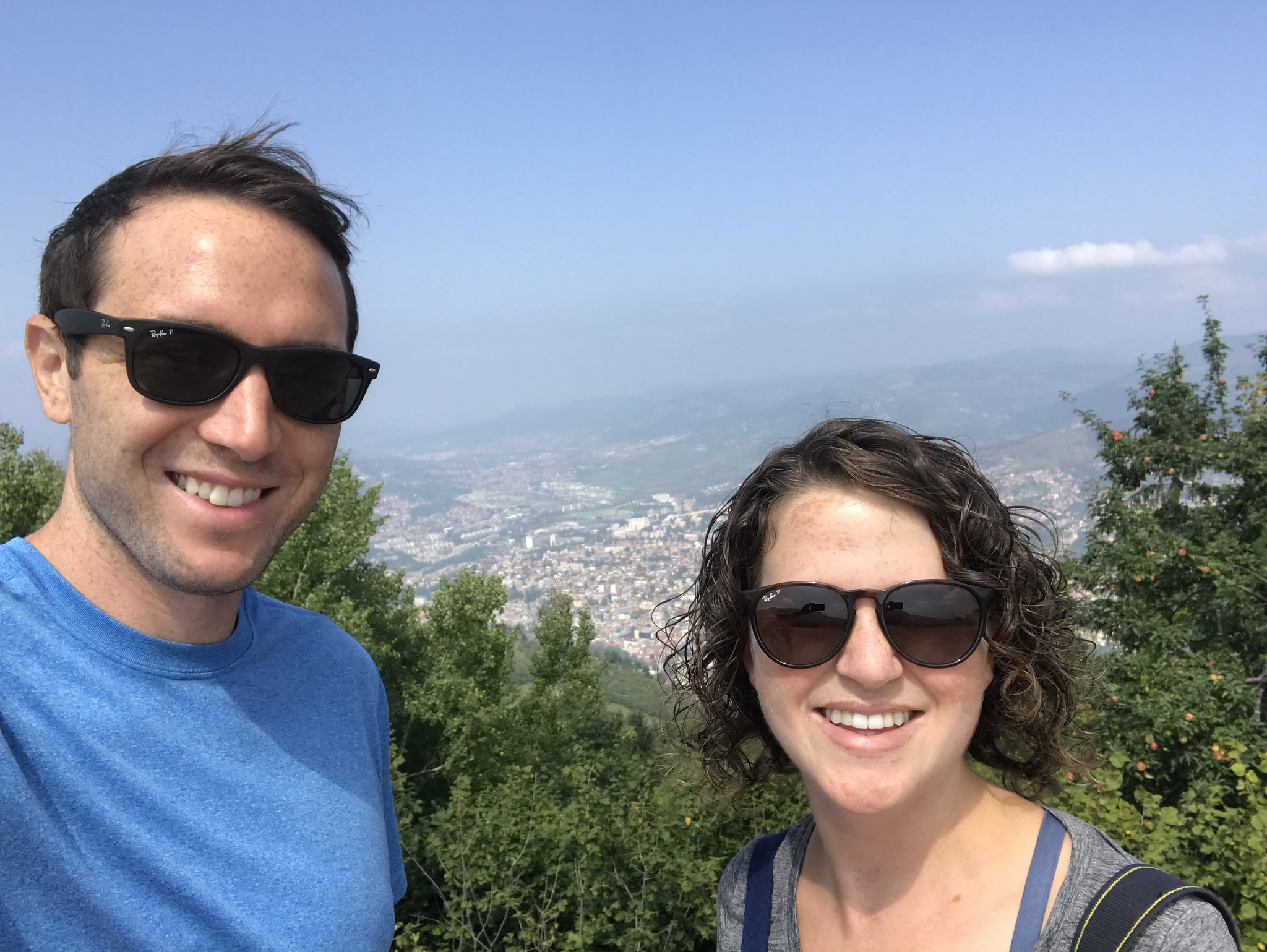
Hiking through the forest on the abandoned bobsled track was a surreal experience and something I will never forget. It brought home how quickly Sarajevo went from being a modern city hosting the Olympics to being devastated by war only a few years later.
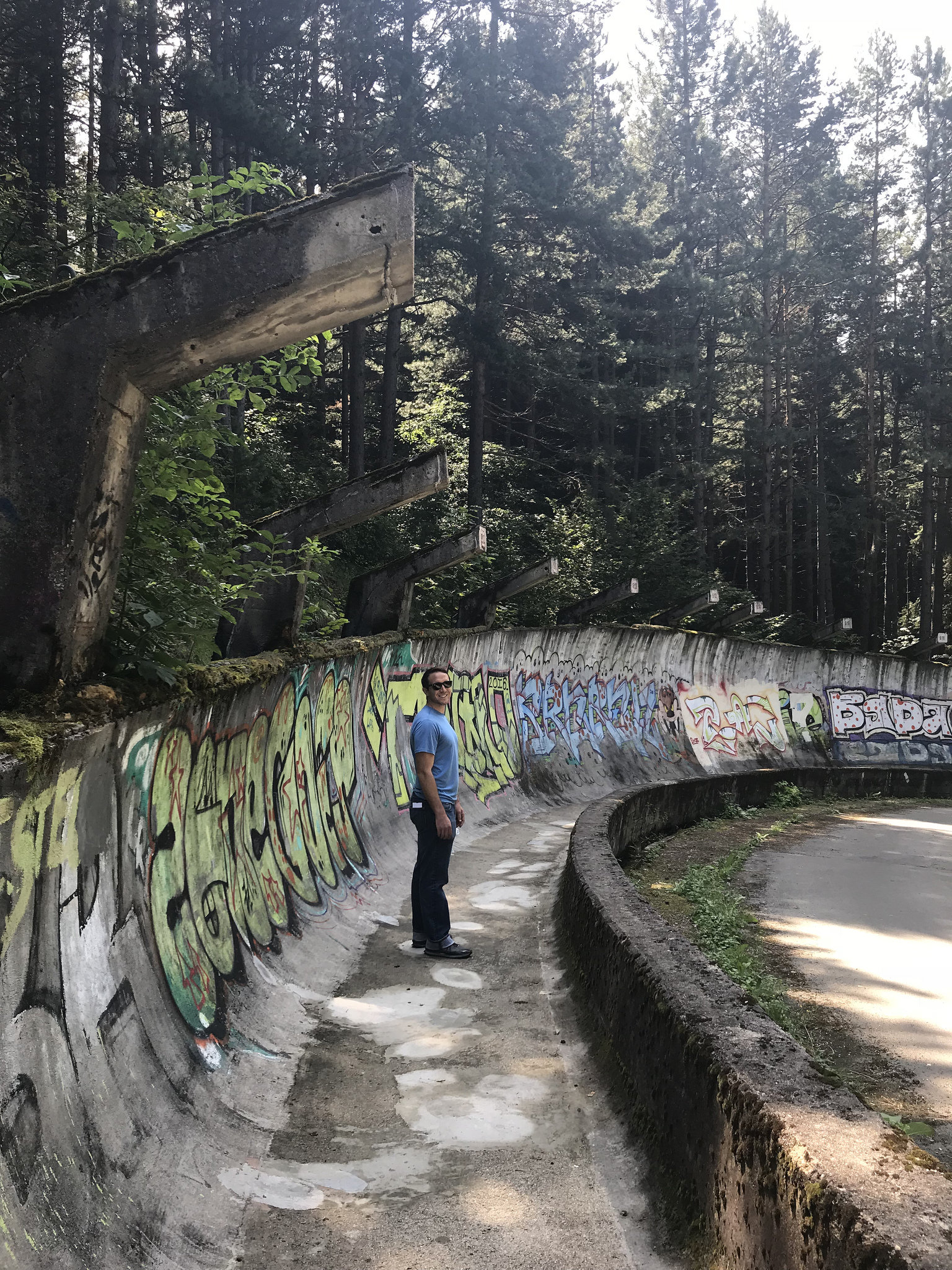
It also served as a testament to the power of nature. At 34 years old this track is not an ancient ruin. Yet so much of the area has already been reclaimed by the forest.
Sarajevo was the start of one of the most interesting and thought provoking parts of our trip. As we entered Bosnia we left the bubble of convenience and modernity that characterizes the EU. In the Balkans the weight of history is palpable and that history is much more complicated than anything you could learn in a classroom. I know our time there will have a lasting impact on my worldview and I feel so grateful to have spent time in this beautiful part of the world.
